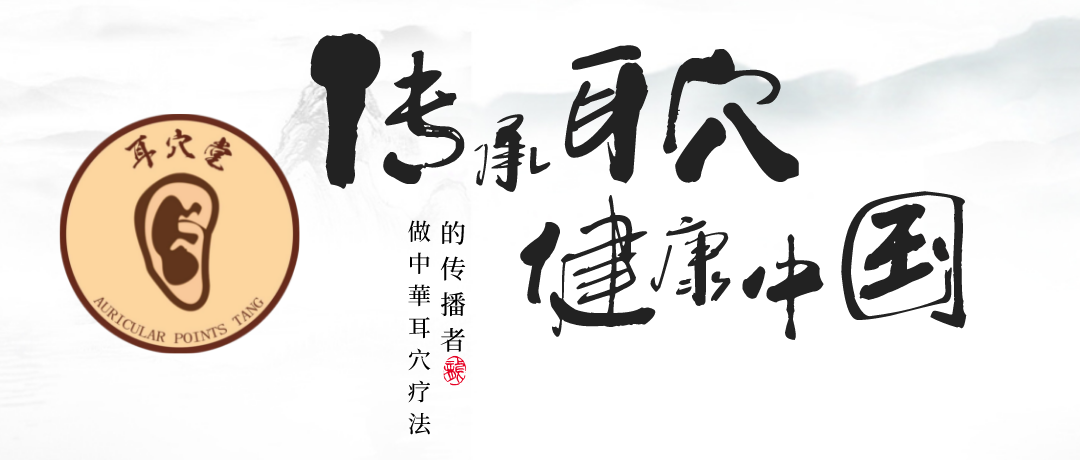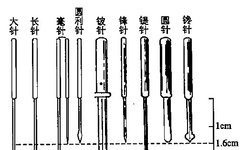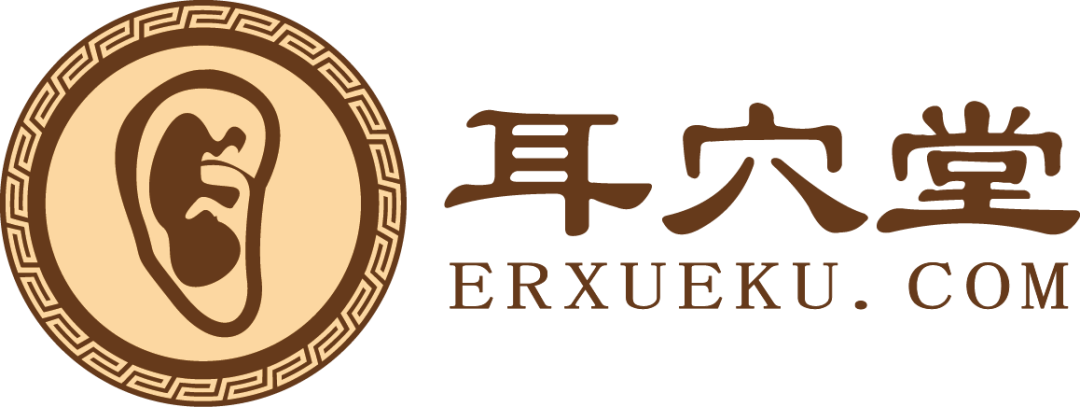
Knowledge of Auricular Points Gathered Together
Auricle and Instrument Treatment
Classification of the Nine Needles in Classical Chinese Medicine
The earliest records of the Nine Needles can be found in the “Ling Shu: Official Needles” and “Ling Shu: Nine Needles and Twelve Originals”. The Nine Needles form the foundation of various acupuncture instruments in Traditional Chinese Medicine (TCM), and they likely originated during the Bronze Age. They include: Chán needle (Arrowhead needle), Round needle (Yuan needle), Tuī needle (Pushing needle), Fēng needle (Three-edged needle), Bī needle (Sword-tip needle), Round benefit needle, Máo needle, Long needle (Ring-jump needle), and Dà needle. Not all classical Nine Needles are suitable for auricular acupuncture or other auricle therapies. “Each of the Nine Needles has a different shape, each suited to its purpose.” (Figure 29-1)
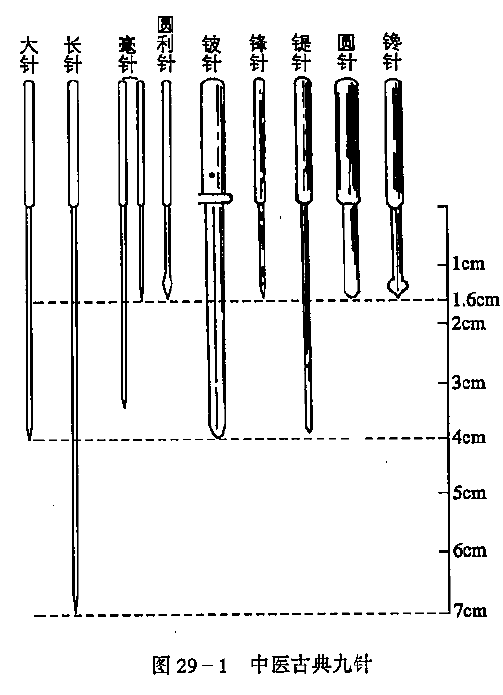
Máo Needle: The structure is divided into five parts: needle tail, needle handle, needle root, needle body, and needle tip. Currently, commonly used máo needles are mostly made of stainless steel, with some made of gold and silver.
Auricular Máo Needle: The modern máo needle is an improvement derived from the classical Nine Needles, commonly used for auricular acupuncture. Auricular needles come in two main sizes: 5 fen (13 mm) and 1 inch (25 mm), with thicknesses of 26, 28, 30, 32, and 34 gauge, corresponding to diameters of 0.45 mm, 0.38 mm, 0.32 mm, 0.26 mm, and 0.22 mm respectively. (Figure 29-2ab)
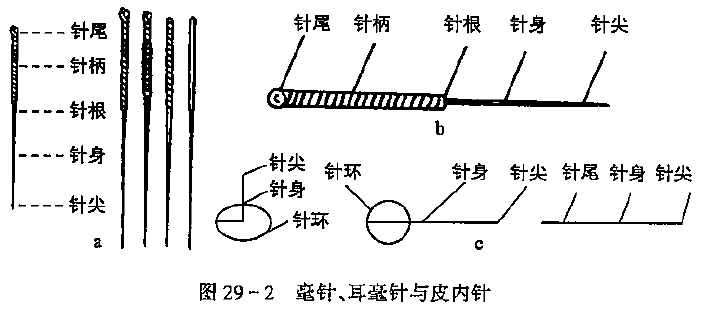
Subcutaneous Needle: This is a small needle made of stainless steel wire. It mainly comes in two types: granule type (wheat grain type) and pin type (thumbtack type). The granule type generally has a needle length of about 10 mm, with a handle resembling a grain of wheat or circular in shape, and the needle body aligned with the handle. The pin type has a needle body length of 2-3 mm, with a circular handle, and the needle body at a 90-degree angle to the handle. This type is often used for vertical shallow punctures on the auricle and face. (Figure 29-2c)
Skin Needle: This is a type of needle with a small hammer-shaped head. The handle is generally 15-19 cm long, with one end attached to a lotus-seed-shaped needle plate, which is the needle head, and the lower part embedded with short stainless steel needles, forming a needle bundle (group). Depending on the number of needles in the bundle, they are referred to as plum blossom needles (5 needles), seven-star needles (7 needles), and luohan needles (18 needles), etc.
If the plum blossom needle is combined with magnetism, it is called a magnetic plum blossom needle; if two output wires from a power source are connected, one to the plum blossom needle and the other to a copper rod, it can form an electric plum blossom needle. The holding method for the skin needle involves gripping the handle with the right hand, fixing the end of the handle with the ring and little fingers at the base of the little finger, generally leaving 2-5 cm of the handle protruding from the palm, with the thumb and middle two fingers holding the handle, and the index finger placed on the middle part of the handle. (Figure 29-3)

Excerpted from “Modern Comprehensive Auricular Point Atlas”
Xu Chongming Zhang Ligui

Scan to Add
Auricular Point Hall Mingming
Join the Auricular Point Exchange Group

Find Auricular Point Information
Visit the Auricular Point Database
In the Vast Sea of People | Recognizing Each Other by Ears
Inheriting Auricular Points | Healthy China
